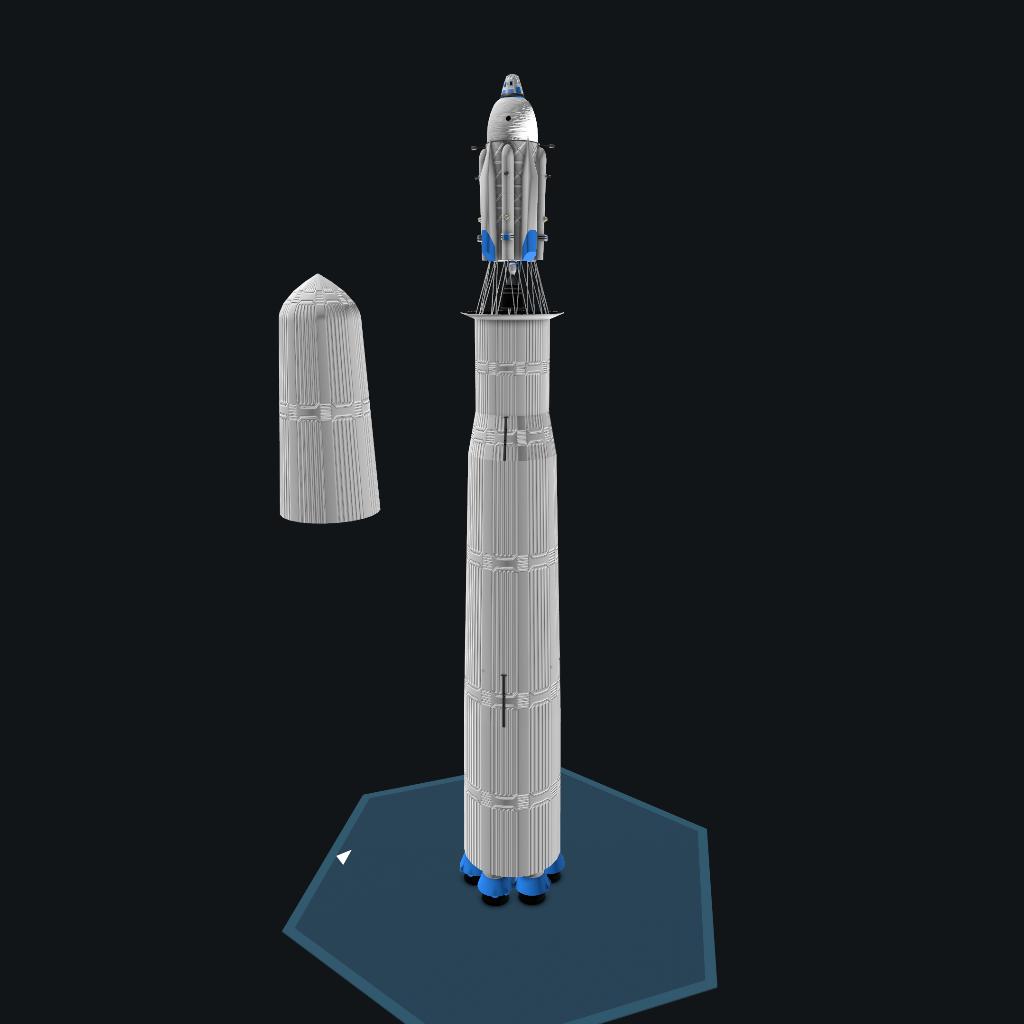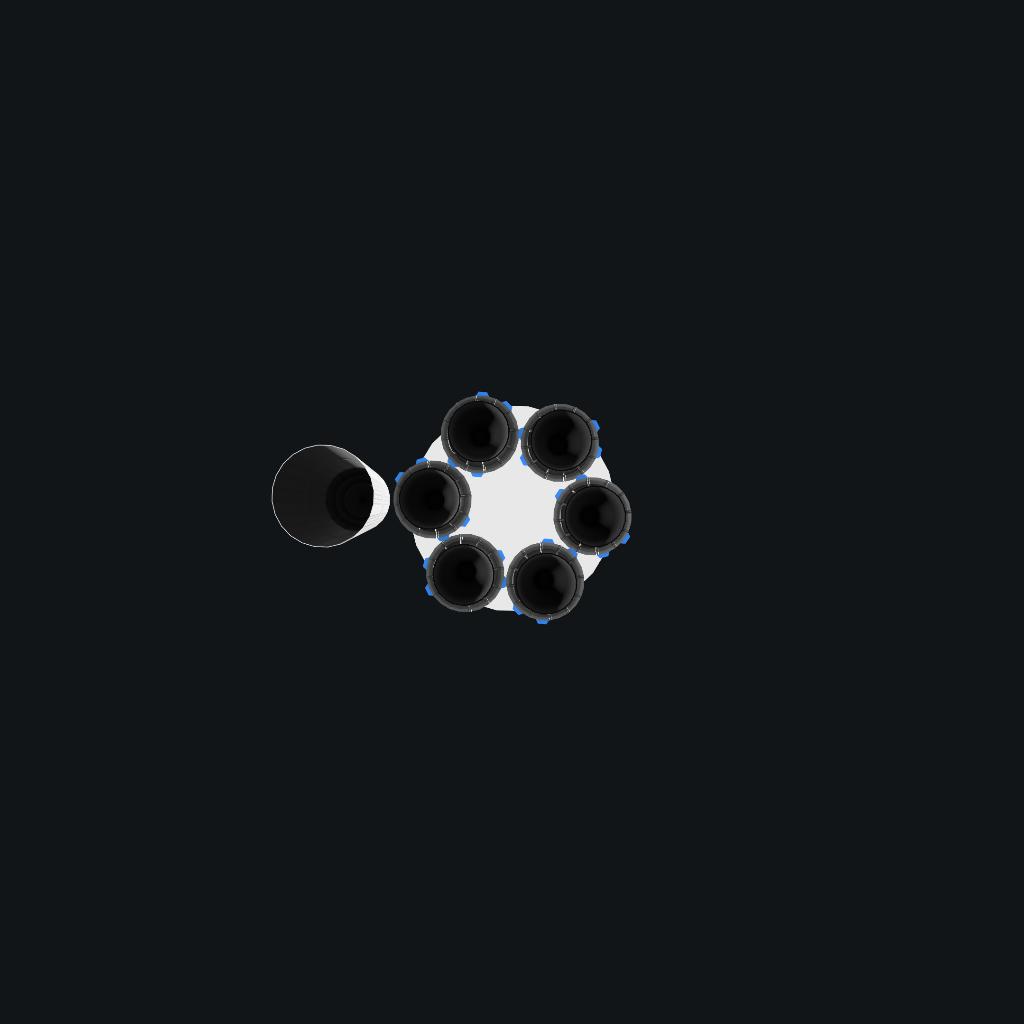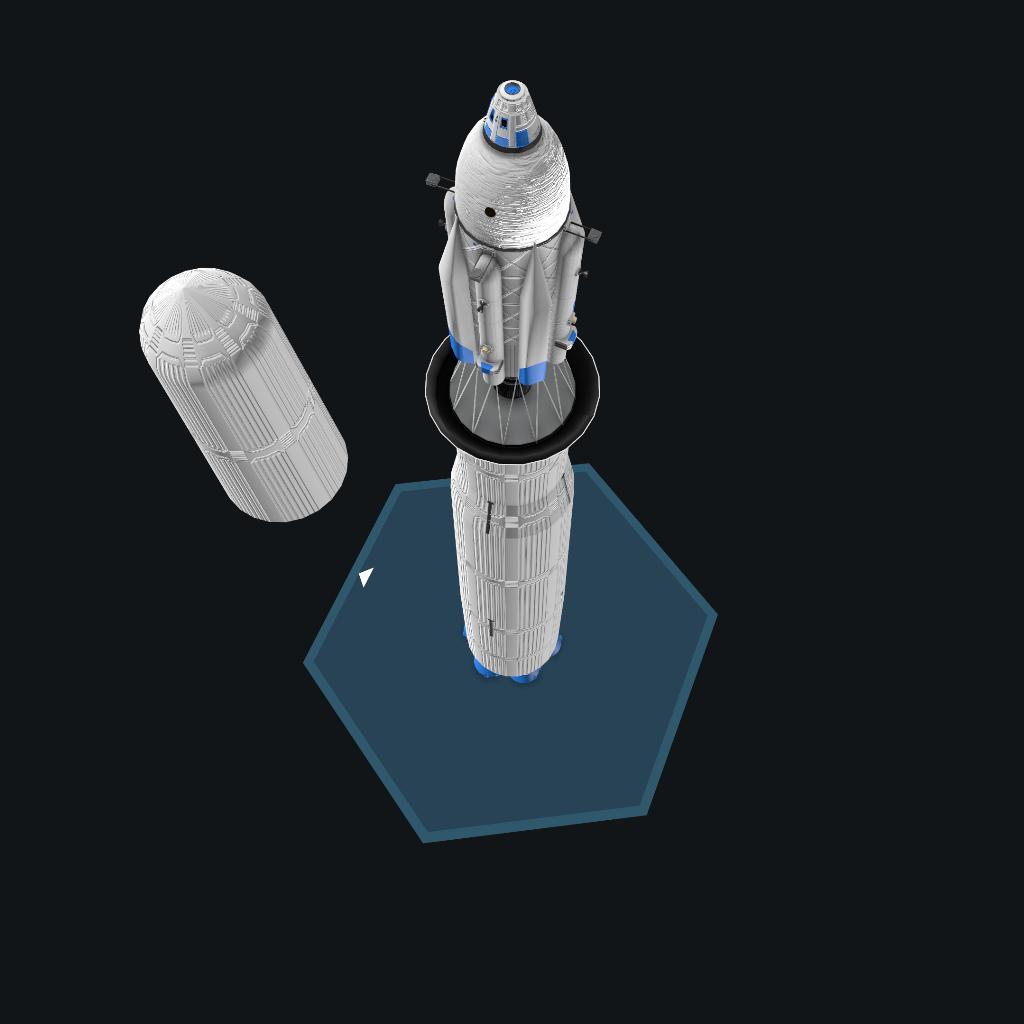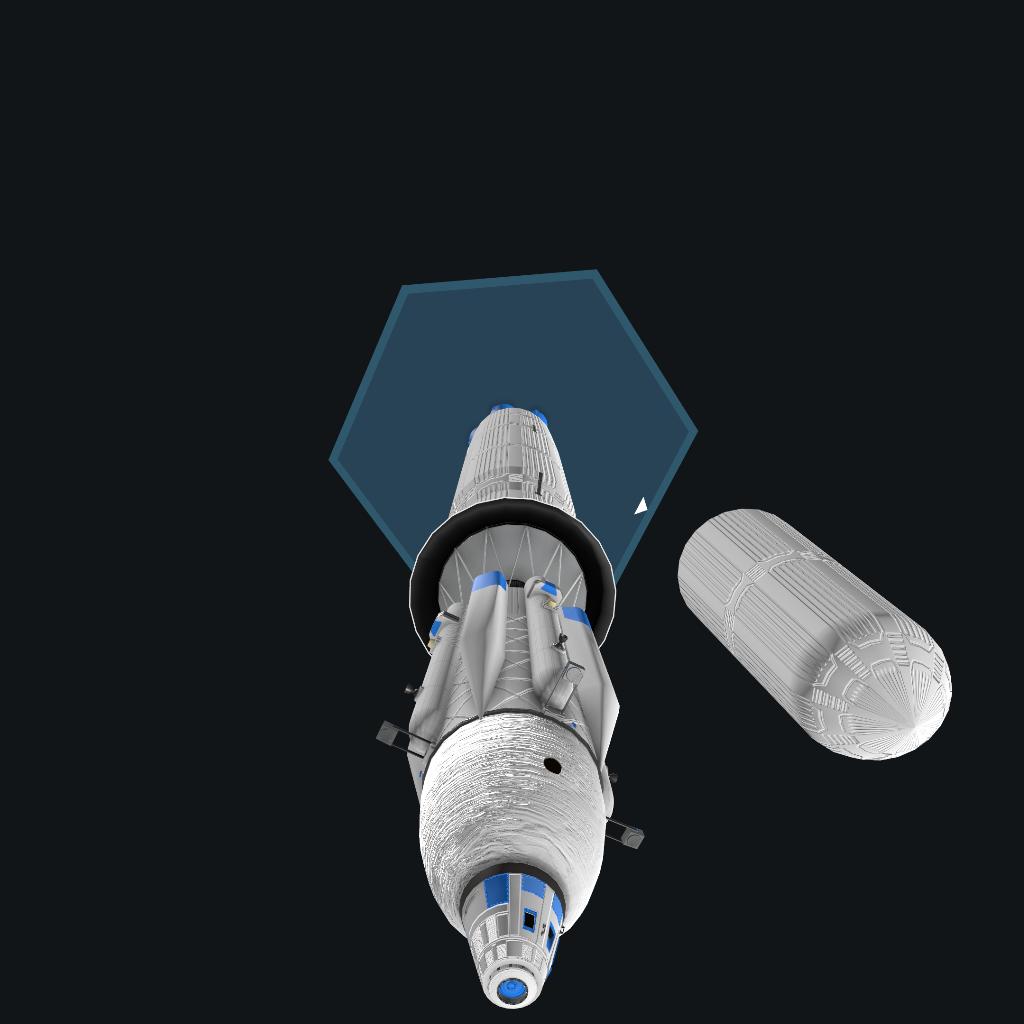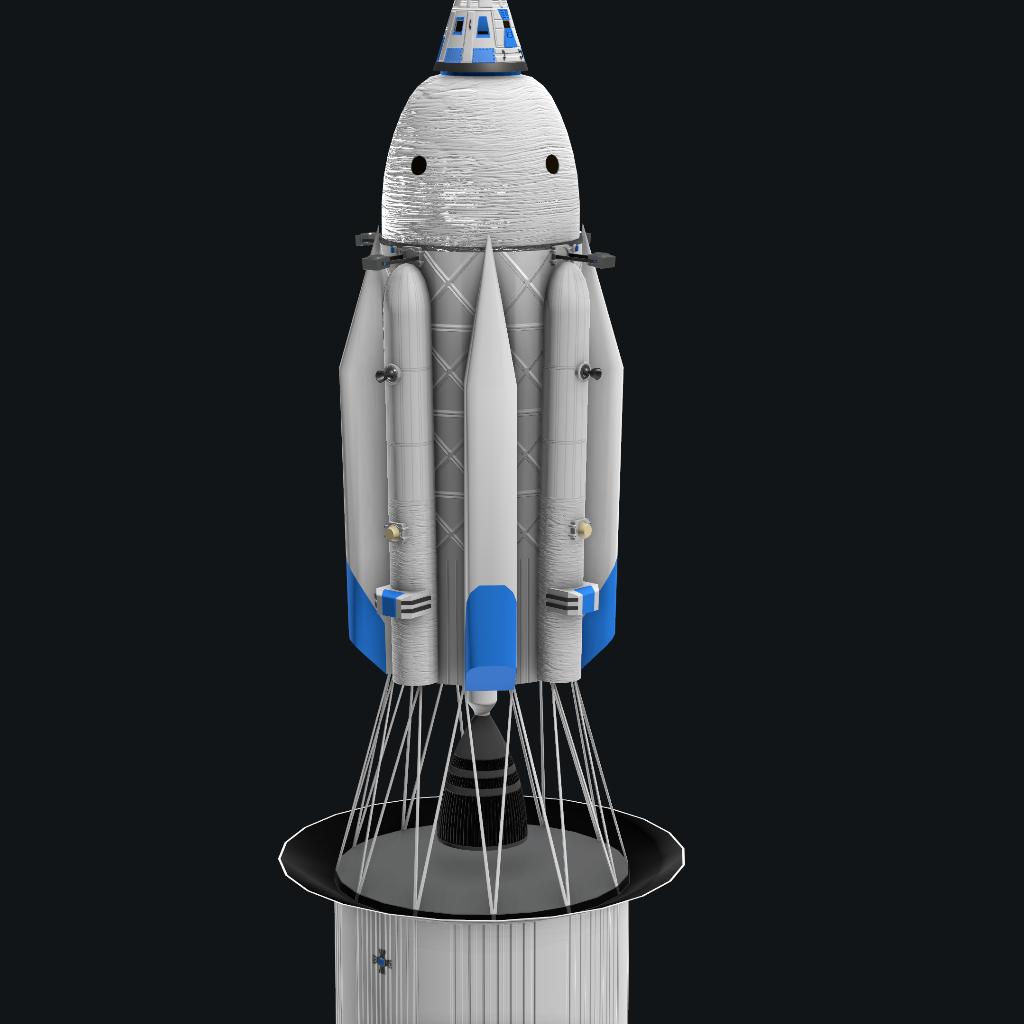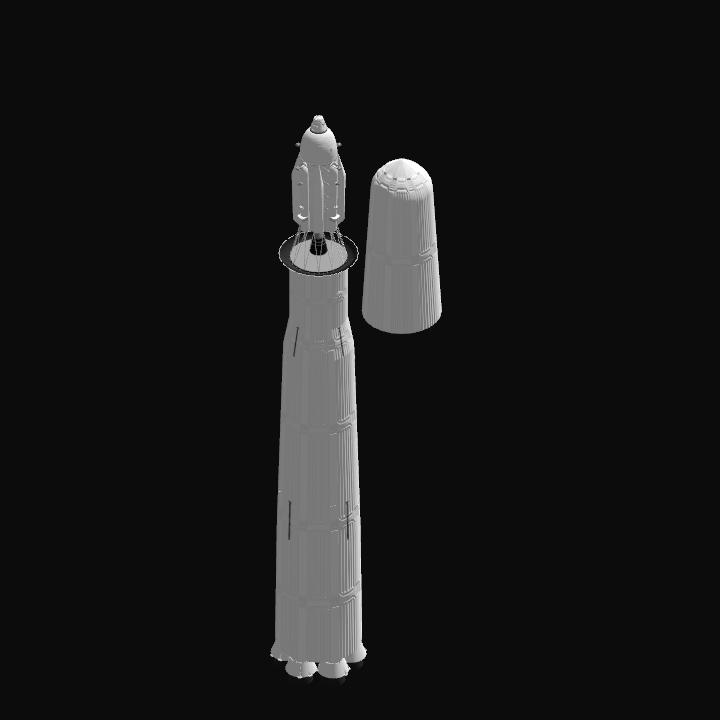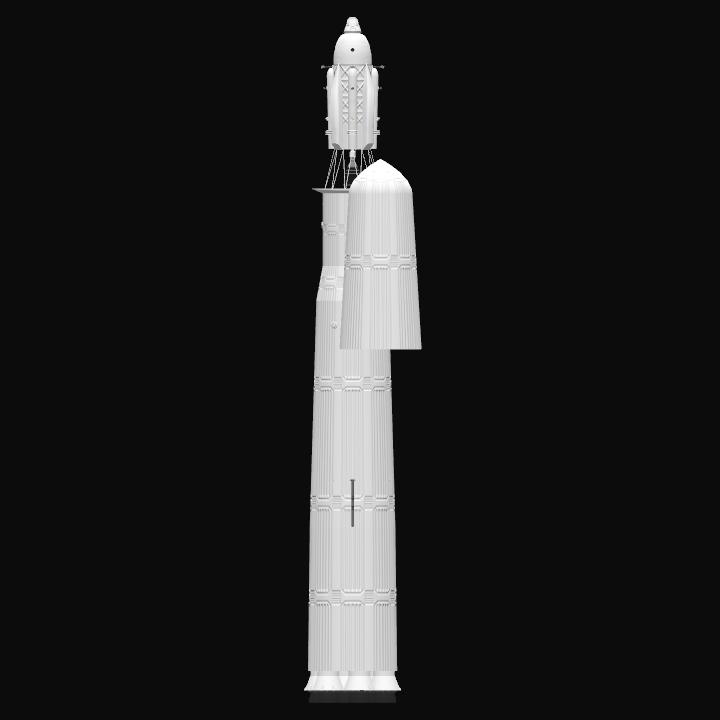Super Heavy Rocket for Deep Space Exploration
Overview:
This super heavy rocket, designed within the simulation environment of "Juno: New Origins," is engineered for ambitious deep space exploration missions. With a towering height of 77.4 meters and a robust width of 9.8 meters, it stands as a testament to human ingenuity and the relentless pursuit of cosmic knowledge.
Structure:
First Stage: Comprising multiple powerful engines or boosters, this stage is optimized for brute force, designed to overcome Earth's gravitational pull with ease. Its significant mass of 2,252.1 tons of propellant ensures a high Delta V of 9,223 m/s, enabling the rocket to push beyond low Earth orbit.
Second Stage: Transitioning to a more streamlined design, the second stage reduces excess mass while maintaining thrust efficiency. This stage is crucial for orbital insertion or for setting the trajectory towards distant celestial bodies.
Payload Fairing: The conical fairing at the apex of the rocket houses sensitive equipment or possibly a crew module, protecting it from the harsh conditions of atmospheric ascent until it reaches the vacuum of space.
Performance:
Thrust-to-Weight Ratio (TWR): Achieving a TWR of 2.0 at maximum thrust, the rocket balances the need for powerful lift-off with the necessity for efficient space travel. This ratio is optimal for ensuring the rocket can maneuver effectively once in space.
Delta V: The total Delta V of 9,223 m/s is impressive, allowing for extensive travel within our solar system. This capability is essential for missions targeting distant planets or asteroids, offering the potential for significant speed adjustments en route.
Burn Time: With a burn time of 16.6 minutes, the rocket is designed for sustained propulsion, crucial for achieving the necessary velocities for interplanetary travel without frequent stage separations or refueling stops.
Design Philosophy:
This rocket embodies the pinnacle of current rocket technology within the game, pushing the boundaries of what's possible in space travel. Its design emphasizes:
Efficiency: By optimizing engine performance for both atmospheric and vacuum conditions, ensuring that each stage contributes maximally to the rocket's journey.
Durability: With a robust structure capable of withstanding the stresses of launch and the harsh environment of space.
Adaptability: Designed with future upgrades in mind, allowing for the addition of more advanced propulsion systems or additional payload capacity as technology progresses within the game's universe.
Potential Missions:
This rocket could be deployed for missions such as:
Interplanetary Exploration: Capable of reaching Mars, Jupiter, or beyond, carrying rovers, landers, or even crewed missions to these destinations.
Asteroid Mining: With its high payload capacity, it could be used to send mining equipment to asteroids, aiming to harvest valuable minerals.
Deep Space Probes: Launching probes to the outer planets, or even beyond our solar system, to gather data from the cosmic frontier.
This super heavy rocket represents not just a vehicle for space travel but a stepping stone for humanity's future in exploring the vast expanses of the universe, as simulated in "Juno: New Origins."
Super Heavy Rocket for Deep Space Exploration
Overview:
This super heavy rocket, designed within the simulation environment of "Juno: New Origins," is engineered for ambitious deep space exploration missions. With a towering height of 77.4 meters and a robust width of 9.8 meters, it stands as a testament to human ingenuity and the relentless pursuit of cosmic knowledge.
Structure:
First Stage: Comprising multiple powerful engines or boosters, this stage is optimized for brute force, designed to overcome Earth's gravitational pull with ease. Its significant mass of 2,252.1 tons of propellant ensures a high Delta V of 9,223 m/s, enabling the rocket to push beyond low Earth orbit.
Second Stage: Transitioning to a more streamlined design, the second stage reduces excess mass while maintaining thrust efficiency. This stage is crucial for orbital insertion or for setting the trajectory towards distant celestial bodies.
Payload Fairing: The conical fairing at the apex of the rocket houses sensitive equipment or possibly a crew module, protecting it from the harsh conditions of atmospheric ascent until it reaches the vacuum of space.
Performance:
Thrust-to-Weight Ratio (TWR): Achieving a TWR of 2.0 at maximum thrust, the rocket balances the need for powerful lift-off with the necessity for efficient space travel. This ratio is optimal for ensuring the rocket can maneuver effectively once in space.
Delta V: The total Delta V of 9,223 m/s is impressive, allowing for extensive travel within our solar system. This capability is essential for missions targeting distant planets or asteroids, offering the potential for significant speed adjustments en route.
Burn Time: With a burn time of 16.6 minutes, the rocket is designed for sustained propulsion, crucial for achieving the necessary velocities for interplanetary travel without frequent stage separations or refueling stops.
Design Philosophy:
This rocket embodies the pinnacle of current rocket technology within the game, pushing the boundaries of what's possible in space travel. Its design emphasizes:
Efficiency: By optimizing engine performance for both atmospheric and vacuum conditions, ensuring that each stage contributes maximally to the rocket's journey.
Durability: With a robust structure capable of withstanding the stresses of launch and the harsh environment of space.
Adaptability: Designed with future upgrades in mind, allowing for the addition of more advanced propulsion systems or additional payload capacity as technology progresses within the game's universe.
Potential Missions:
This rocket could be deployed for missions such as:
Interplanetary Exploration: Capable of reaching Mars, Jupiter, or beyond, carrying rovers, landers, or even crewed missions to these destinations.
Asteroid Mining: With its high payload capacity, it could be used to send mining equipment to asteroids, aiming to harvest valuable minerals.
Deep Space Probes: Launching probes to the outer planets, or even beyond our solar system, to gather data from the cosmic frontier.
This super heavy rocket represents not just a vehicle for space travel but a stepping stone for humanity's future in exploring the vast expanses of the universe, as simulated in "Juno: New Origins."
GENERAL INFO
- Created On: Windows
- Game Version: 1.3.204.1
- Price: $180,951k
- Number of Parts: 79
- Dimensions: 75 m x 10 m x 10 m
PERFORMANCE
- Total Delta V: 9.6km/s
- Total Thrust: 54.3MN
- Engines: 23
- Wet Mass: 1.57E+6kg
- Dry Mass: 1.16E+5kg
STAGES
| Stage | Engines | Delta V | Thrust | Burn | Mass |
|---|---|---|---|---|---|
| 1 | 6 | 1.5km/s | 41.9MN | 41s | 1.56E+6kg |
| 2 | 5 | 5.1km/s | 11.9MN | 2.7m | 7.68E+5kg |
| 3 | 6 | 2.5km/s | 400kN | 9.3m | 1.16E+5kg |
| 5 | 1 | 455m/s | 115kN | 3.9m | 62,638kg |

